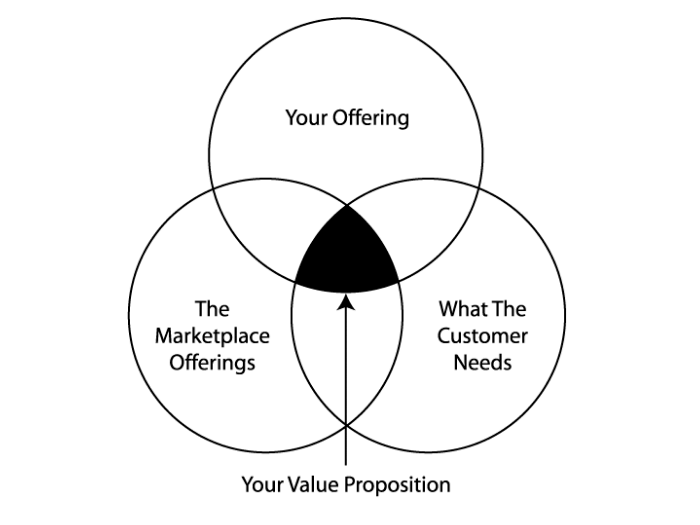Marketing will keep evolving. The way marketers reach and engage with their customers has drastically changed, same as the way customers find businesses that satisfy their needs.
You’ve got your killer product or service ready, you’ve started your business and everything is moving as expected. You’ve set your goals, your staff has the requisite training and now all that’s left to do is to start growing profits and striking the goals.
But how exactly can you make that happen?
Only one way – Marketing magnetism; Attracting customers who are ready, willing and eager to pay. Marketing magnetism is a strategy to get customer/consumer and brands drawn together at the right time and place.
“Like a magnet, the customer and brand come together naturally because the mutual attraction is that strong,” – says Callari.

The picture above is a perfect example of a business with a classic marketing magnetism – pancake pantry. There is a line of customers every morning whether it’s raining or not, sunny or not.
Of a truth this is what every business aspires to have – customers that are so loyal and enthusiastic about your business. Ready and willing to stand in rain or sun to give their money.
This is no magic. Marketing magnetism help you achieve this result. Attracting flood of customers to your business like a magnet.
Let me ask

What’s working right now to attract new clients, expose your value, get people talking, and differentiate your business? Do your clients know all that you do?
So stop running after business. Instead of running and focusing on sales results. Attract clients to your business. Give them what they’re attracted to, actively searching for or value most. They will be left with no option than giving their money in return.
You attract customers when they learnt that you understand them better. If your business is having trouble finding clients, make it easier for clients to find your business.
Your brand is your secret weapon. It makes you stands out of others, not just because you are different from others, but HOW and WHY you’re different.
Let your customers Know the HOW and WHY you’re different from others.
In this article, we will take a deep dive into your marketing magnetism. You will learn how to brand your business that will make it magnetize customers quickly just like pancake pantry.
Our key focus is on:
Creating Value For Your Customer

Delivering value to customers is the reason any business exists. When your business provides products or services that give your customers an opportunity to accomplish their goals, they receive value.
When your business adds true value, customers are willing to pay for that value. They also come back for more, follow your company’s website, blogs and social media posts to stay informed, and even refer your business to people they know.
Value creates loyal customers that generate revenue which enables businesses to survive. By shifting your focus to providing value that focuses on your customers’ wants you start helping and stop selling.
Here are five steps to help you create great value for customers:
Step 1: Know What Drives Value For Your Customers
Step 2: Understand Your Value Proposition
Step 3: Customer’s Segmentation
Step 4: Create a Win-Win Price
Step 5: Focus on your most valuable customers
Step 1: Know What Drives Value For Your Customers

Today’s Customers have an overwhelming abundance of choice. They have high expectations (value) and little loyalty to spare if brands fail to meet them. It’s very much a buyer’s market than a seller’s market.
Knowing what drives value to your customer is the first step to your marketing magnetism.
If you provide enough value, then you earn the right to promote your company in order to recruit new customers. The key is to always provide value. – Guy Kawasaki
Customer Value is the level of satisfaction of your customer towards your business. It is a measure of what aproduct or service is worth to a customer against the possible alternatives.
Value for one customer may not be the same as another.
However, value, or perceived value, can change over the course of the customer’s journey. They’ll have some idea of the value you offer when they’re first introduced to your product or brand, and this will change once they begin to interact with you and your product or service, your people, and even other customers.
Talk to them, survey them, and watch their actions and reactions. In short, capture data to understand what is important to your customers and what opportunities you have to help them.
This is far easier than you can imagine. Your customers already know what interests them. They already have subconscious and conscious drivers. They already know the problems they have, and may even know the solutions they need.
You just need to understand what drives value for your customers. Good customer research including talking to them, taken surveys, and watching their actions and reactions, can help you discover what matters most to them.
In short, capture all data to understand what is important to your customers and what opportunities you have to help them.
This is important because the results of your efforts to create value are measured in the customers’ perception of that value.
Step 2: Understand Your Value Proposition

A value proposition is a statement that answers the ‘why’ someone should do business with you. It should convince a potential customer WHY you’re different from others and HOW your service or product will be of more value to them than similar offerings from your competition.
“Make something people want and sell that, or be someone people need and sell you.” –
The value customers receive is equal to the benefits of a product or service minus its costs.
The big question:
- What value does your product or service create for them?
- What does it cost them–in terms of price plus any other added costs of ownership or usage (e.g., how much of their time do they have to devote to buying or using your product or service?)
Consider all the businesses out there offering exactly what you offer. With similar products or services, customers have no choice but to make a subjective choice.
Your value proposition is where you win them over. You need to understand your value proposition so that you communicate what makes you different, and continually work harder to set yourself apart.
You can do that through:
- Identifying what you’re good at and owning it
- Make your value proposition clear in all your communications
- Ask customers why they buy from you, use feedback to boost your value proposition
- Quantify your value with real data
- Communicate the benefits of your service so customers can see the value
Squeezing all of your value into one proposition isn’t easy, which is why we’ve come up with a guide that you should follow before you cement your value proposition. {lead magnet]
Step 3: Customer’s Segmentation

Different customers will have varying perceptions of your value relative to your competitors, based on geographic proximity, for example, or a product attribute that one segment may find particularly attractive.
Rather than trying to shoehorn the same value proposition to your entire audience, identify what tickles different segments.
I mean segmenting your customers. Segmenting, at its most basic, is the separation of a group of customers with different needs into subgroups of customers with similar needs and preferences.
By doing this, you can better tailor and target your products and services to meet each segment’s needs. This isn’t, as McKinsey’s John Forsyth says, simply for marketing or retail firms.
“We see many, many companies saying, ‘I want to get more consumer-driven and customer-facing. But sometimes the organizations don’t know how to start. I’d say you really start with a basic understanding of your consumers or customers, right? And that’s segmentation.” – By Philip Kotler
Segment your audience based on what they value, and adjust your message to each. Value could vary based on season, geography, demographics or certain product attributes. What an adult considers as value, for example, can be completely different than that of a teenager.
If you have a target market cut out for you, then all you have to do is get in the shoes of your customer, and figure out what’s a gesture they would appreciate.
Step 4: Create a Win-Win Price

Set a price that makes it clear that customers are receiving value but also maximizes your “take.” Satisfied customers that perceive a lot of value in your offering are usually willing to pay more, while unsatisfied customers will leave, even at a low price.
“The true test of character is to live win-win even when promoted to positions where win-lose is possible.” –
Using “cost-plus” pricing (i.e., pricing at some fixed multiple of product costs) often results in giving away margin unnecessarily to some customers while losing incremental profits from others.
Step 5: Focus on your most valuable customers

Disproportionately allocate your sales force, marketing dollars, and R&D investments toward the customers and segments that you can best serve and will provide the greatest value in return. Also, allocate your growth capital toward new products and solutions that serve your best customers or can attract more customers that are similar to your best customers.
“As an entrepreneur, value creation will always be your first line of defense against business failure.” –
Your customers are the lifeblood of your business. They are the source of current profits and the foundation of future growth. These steps will help you find more ways to grow your business by better serving your best customers.
.
